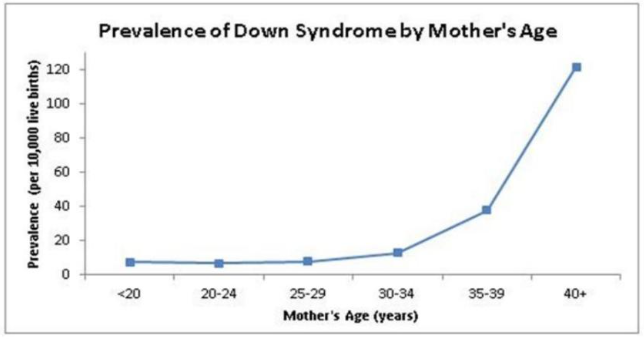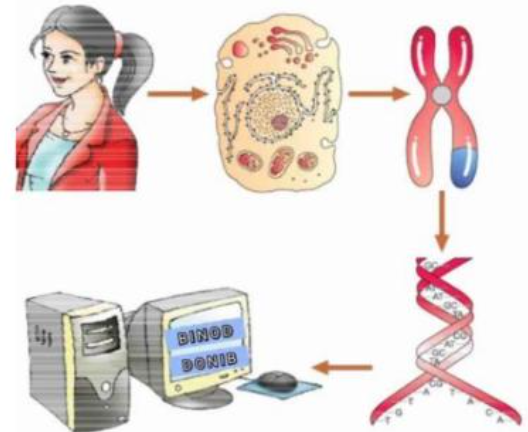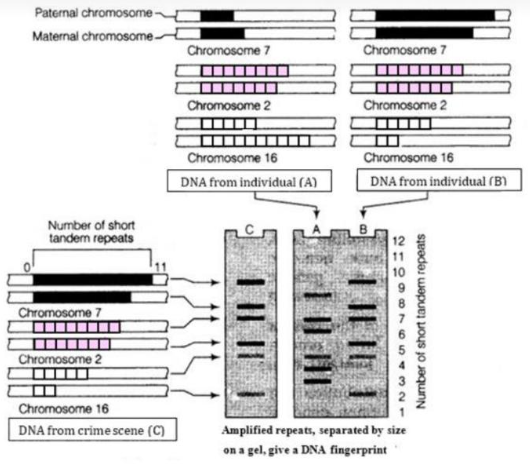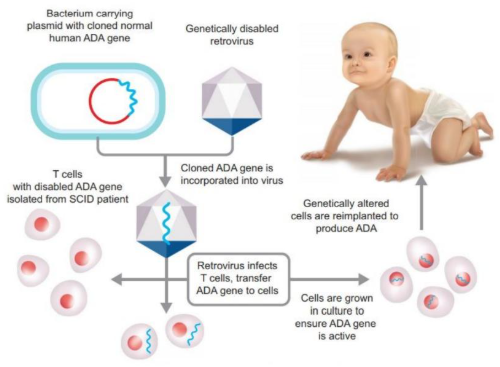CBSE Class 12 Biology Half-Yearly Exam 2025: Important Case Study Questions

SHARING IS CARING
If our Website helped you a little, then kindly spread our voice using Social Networks. Spread our word to your readers, friends, teachers, students & all those close ones who deserve to know what you know now.
We have specially compiled a list of case study questions for CBSE Class 12 Biology Half Yearly Exam in this post—along with their answers. This resource provides invaluable support to students in their exam preparation and helps them understand difficult topics.
Case study based questions have now become extremely important in the exam pattern, as it tests not just subject knowledge but also the ability to think about practical problems.
👉 Read Also - CBSE Class 12 Chemistry Half Yearly Exam 2025-26: Sample Practice Paper PDF
👉 Read Also - CBSE 12th Half-Yearly Exam 2025-26 : Chemistry Top 50 MCQs with Answers
CBSE 12th Biology Half-Yearly Case Study Questions
Case Study 1:
Nondisjunction is the failure of homologous chromosomes to disjoin correctly during meiosis. It leads to the formation of a new cell with an abnormal amount of genetic material. A number of clinical conditions are the result of this type of chromosomal mutation. This results in the production of gametes containing a greater or lesser chromosomal amount than normal ones. Consequently, the individual may develop a trisomy or monosomal syndrome. Nondisjunction can occur in both Meiosis I and Meiosis II of the cellular division. It is also the main cause of many genetic disorders; however, its origin and process remain vague. Although it results in the majority of cases from errors in maternal meiosis II, both paternal and maternal meiosis I do influence it. Maternal age is considered a risk factor for trisomy, as well as recombination alterations and many others that can affect chromosomal segregation.
Q1. Which of the following conclusions can be true regarding aneuploidy?
1. It is the presence of an extra chromosome in a diploid cell.
2. An aneuploid cell differs from other cells only in size.
3. It can be less number of chromosomes in a diploid cell.
4. Aneuploidy always affects female individuals.
(A) I only
(B) both I and III
(C) both II and III
(D) I, III and IV
Answer: (B) both I and III
👉 Read Also - CBSE Class 12 Maths Half Yearly Sample Paper 2025 with Solutions PDF
Q2. Considering the different phases of meiosis, select the correct statements from the following.
1. Errors in meiosis I is the only cause of aneuploidy
2. Aneuploidy always affects sex chromosomes.
3. Most of the aneuploidy results from errors in cell division involved in egg formation.
4. Nondisjunction in meiosis I can lead to more abnormal cells than disjunction in meiosis II.
(A) I only
(B) both I and III
(C) both III and IV
(D) I, III and IV
Answer: (C) both III and IV
Q3. By interpreting the graph of Down syndrome frequency and mothers’ age, select the best conclusion(s) from the following options.
1. Aneuploidy is not influenced by the mother’s age.
2. Delivery before 30 years of age can decrease the incidence of aneuploidy in most cases
3. The chance of aneuploidy increases up to 22 years of age.
4. There is a dramatic increase in aneuploidy if the maternal age exceeds 30
👉 Read Also - CBSE Class 12 Chemistry Half Yearly Sample Paper 2025 with Solutions PDF
Q3. 
(A) I only
(B) both I and III
(C) both II and IV
(D) I, III and IV
Answer: (C) both II and IV
👉 Read Also - CBSE Class 12 Biology Half Yearly Sample Question Paper 2025-26 with Solutions PDF
Q4. The type of genetic disorders mainly caused by chromosomal non-disjunction is
(A) Chromosomal disorders
(B) Mendelian disorders
(C) Incomplete dominance
(D) All the above
Answer: (A) Chromosomal disorders
Q5. Assertion: All types of genetic disorders are caused by chromosomal nondisjunction.
Reason: Chromosomal nondisjunction always affects female individuals.
(A) Both assertion and reason are correct and the reason is the correct explanation of assertion
(B) Both assertion and reason are correct but the reason is not the correct explanation of the assertion
(C) Assertion is correct but the reason is incorrect
(D) Both assertion and reason are incorrect
Answer: (D) Both assertion and reason are incorrect
👉 Read Also - CBSE 12th Half-Yearly Exams 2025: Important Topics & Preparation Tips
Case Study 2:
A Representative Diagram of the Human Genome Project:
Case Study 2. 
Q1. In the history of Biology, the Human Genome Project led to the development of:
(A) Biotechnology
(B) Biomonitoring
(C) Bioinformatics
(D) Biosystematics
Answer: (A) Biotechnology
👉 Read Also - CBSE 12th Business Studies Half-Yearly Exam 2025-26: Sample Practice Paper
Q2. Name a free living, non-pathogenic nematode, the DNA of which has been completely sequenced.
Answer: Caenorhabditis elegans
Q3. Summarize the methodology adopted in the Human Genome Project.
Answer: Expressed Sequence Tags (ESTs): The approach focused on identifying all the genes that are expressed as RNA.
Sequence Annotation: The other took the blind approach of simply sequencing the whole set of genome that contained all the coding and non-coding sequence, and later assigning different regions in the sequence with functions.
👉 Read Also - CBSE 12th Accountancy Half-Yearly Exam 2025-26: Important Sample Practice Paper
Q4. What are SNPs’? How are they useful in human genomics?
Answer: SNPs are single nucleotide polymorphisms, pronounced as ‘snips’.
- Identify disease-causing genes in humans
- Can be used to understand the molecular mechanisms of sequence evolution.
Q5. Mention at least four salient features of the Human Genome Project.
Answer: Four salient features of the Human Genome Project:
1. Human genome contains 3164.7 million bp.
2. Average gene consists of 3000 bases, but sizes vary greatly.
3. Almost all (99.9 percent) nucleotide bases are exactly the same in all people.
4. Less than 2 percent of the genome codes for proteins.
Case Study 3:
Two blood samples of suspects ‘A’ and ‘B’ were sent to the Forensic Department along with sample ‘C’ from the crime scene. The Forensic Department was assigned the responsibility of running the samples and matching the samples of the suspects with that of the sample from the scene of the crime and thereby identifying the culprit.
Case Study 3.
Q1. In genetic fingerprinting, the ‘probe’ refers to –
(A) A radioactively labelled double stranded RNA molecule.
(B) A radioactively labelled double stranded DNA molecule.
(C) A radioactively labelled single stranded DNA molecule.
(D) A radioactively labelled single stranded RNA molecule.
Answer: (C) A radioactively labelled single stranded DNA molecule.
Q2. What does ‘minisatellite’ and ‘microsatellite’ mean in relation to DNA Fingerprinting?
Answer: Minisatellite: the repeating unit consists of 10-100 base pairs.
Microsatellite: the repeating unit consists of 2-6 base pairs.
Q3. How does polymorphism arise in a population?
Answer: Polymorphism (variation at the genetic level) arises due to mutations.
Q4. State the steps involved in DNA Fingerprinting in a sequential manner.
Answer: Steps of DNA Fingerprinting:
1. DNA isolation
2. DNA digestion with restriction enzymes.
3. DNA fragment separation by electrophoresis.
4. Blotting
5. Hybridization
6. DNA visualization under UV light.
Case Study 4:
Bacteria like Streptococcus pneumoniae and Haemophilus influenzae are responsible for the disease pneumonia in humans which infects the alveoli (air-filled sacs) of the lungs. As a result of the infection, the alveoli get filled with fluid leading to severe problems in respiration. The symptoms of pneumonia include fever, chills, cough, and headache. In severe cases, the lips and fingernails may turn gray to bluish in colour. A healthy person acquires the infection by inhaling the droplets/aerosols released by an infected person or even by sharing glasses and utensils with an infected person. Dysentery, plague, diphtheria, etc., are some of the other bacterial diseases in man. Many viruses also cause diseases in human beings. Rhinoviruses represent one such group of viruses that cause one of the most infectious human ailments – the common cold. They infect the nose and respiratory passage but not the lungs.
The common cold is characterized by nasal congestion and discharge, sore throat, hoarseness, cough, headache, tiredness, etc., which usually lasts for 3-7 days. Droplets resulting from the cough or sneezes of an infected person are either inhaled directly or transmitted through contaminated objects such as pens, books, cups, doorknobs, computer keyboards or mice, etc., and cause infection in a healthy person.
Q1. Which organ in humans gets affected by pneumonia disease?
(A) Stomach
(B) Heart
(C) Lungs
(D) Bladder
Answer: (C) Lungs
Q2. Rhinovirus can infect ................... in humans.
(A) Hand
(B) Nose
(C) Ear
(D) Hairs
Answer: (B) Nose
Q3. By which of the following reason, a healthy person can acquire pneumonia disease?
(A) By exhaling droplets of a non-infected person.
(B) By headache or leg pain.
(C) By eating fast food.
(D) By inhaling droplets of an infected person.
Answer: (D) By inhaling droplets of an infected person.
Q4. How long does the common cold last?
Answer: 3-7 days
Q5. Write any two symptoms of the common cold and pneumonia.
Answer: Cough and nasal congestion.
Case Study 5:
When you insert a piece of alien DNA into a cloning vector and transfer it into a bacterial, plant, or animal cell, the alien DNA gets multiplied. In almost all recombinant technologies, the ultimate aim is to produce a desirable protein. Hence, there is a need for the recombinant DNA to be expressed. The foreign gene gets expressed under appropriate conditions. The expression of foreign genes in host cells involves understanding many technical details. After having cloned the gene of interest and having optimised the conditions to induce the expression of the target protein, one has to consider producing it on a large scale. Can you think of any reason why there is a need for large-scale production? If any protein encoding gene is expressed in a heterologous host, it is called a recombinant protein. The cells harbouring cloned genes of interest may be grown on a small scale in the laboratory. The cultures may be used for extracting the desired protein and then purifying it by using different separation techniques.
Q1. Which of the following should be chosen for the best yield if one were to produce a recombinant protein in large amounts?
(A) A continuous culture system
(B) A stirred-tank bioreactor without in-lets and out-lets
(C) Laboratory flask of the largest capacity
(D) None of the above
Answer: (A) A continuous culture system
Q2. The process of separation and purification of expressed protein before marketing is called
(A) upstream processing
(B) downstream processing
(C) bioprocessing
(D) postproduction processing
Answer: (B) downstream processing
Q3. Genetically engineered bacteria are used for the production of:
(A) Thyroxine
(B) Human insulin
(C) Growth hormone
(D) None of the above
Answer: (B) Human insulin
Q4. Construction of recombinant DNA involves:
(A) cleaving and joining of DNA segments with endonuclease
(B) cleaving DNA segments with endonuclease and re-joining with ligase
(C) cleaving and re-joining DNA segments with ligase
(D) cleaving DNA segments with ligase and re-joining with endonuclease
Answer: (B) cleaving DNA segments with endonuclease and re-joining with ligase
Q5. Any DNA molecule that has the ability to replicate in an appropriate host cell, to which the desired gene are integrated for cloning:
(A) Plasmid
(B) Linker
(C) Vector
(D) adapter
Answer: (C) Vector
Case Study 6:
Gene Therapy
Case Study 6. 
Read the following and answer the questions that follow:
Human gene therapy seeks to modify or manipulate the expression of a gene or to alter the biological properties of living cells for therapeutic use. Gene therapy is a technique that modifies a person‘s genes to treat or cure disease. Gene therapies can work by several mechanisms:
- Replacing a disease-causing gene with a healthy copy of the gene
- Inactivating a disease-causing gene that is not functioning properly
- Introducing a new or modified gene into the body to help treat a disease
Q1. In gene therapy, the gene defects are cured in a child or in ................ stage.
(A) adulthood
(B) adolescent
(C) old age
(D) embryonic
Answer: (D) embryonic
Q2. In 1990 the first gene therapy was given to treat which deficiency?
(A) Adenosine deaminase
(B) phenylketonuria
(C) Phenylalanine
(D) tyrosine
Answer: (A) Adenosine deaminase
Q3. ............... is an alternative method to cure ADA deficiency
(A) Cloning
(B) Bone marrow transplantation
(C) Hybridization
(D) Southern blotting
Answer: (B) Bone marrow transplantation
Q4. Introduction of gene isolate from bone marrow producing ADA should be introduced at what age to permanently cure ADA?
(A) adulthood
(B) adolescent
(C) old age
(D) embryonic
Answer: (D) embryonic
Q5. What kind of disease can be cured with the help of gene therapy?
(A) acute diseases
(B) physiological diseases
(C) hereditary diseases
(D) infectious diseases
Answer: (C) hereditary diseases
----
👉 CBSE Class 12 Study Materials
| CBSE Class 12 Syllabus 2025-26 | CBSE Class 12 Previous Year Papers |
| NCERT Books For Class 12 Books | NCERT Class 12 Solutions |
| CBSE Class 12 Full Study Material | CBSE Class 12 Sample Paper 2025-26 |







 Profile
Profile Signout
Signout












 Quiz
Quiz
 Get latest Exam Updates
Get latest Exam Updates 










